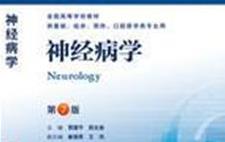摘要:
Objective(s): To describe the breadth of approaches for activity-based therapy (ABT) for the neurologically impaired upper extremity (UE). Data Sources: MEDLINE, CINAHL, Cochrane CENTRAL, and OT Seeker were searched for articles from 2000 to 2017 evaluating ABT for the UE in neurologic diagnoses. Study Selection: Peer-reviewed publications in English language, involving adolescents and adults with chronic neurologic conditions (≥ 3 months), who participated in ABT at least 3x/week for 2 weeks. Using Covidence, an evidence synthesis software, two reviewers independently applied the study criteria; consensus was achieved by discussion or involvement of a third reviewer. Data Extraction: Data was extracted to generate an evidence table and summarized by the research team for study characteristics of population, design, environment, technology, intervention, dosage, and outcomes. Data Synthesis: From 9462 articles screened, 232 met eligibility criteria. ABT literature was overwhelmingly reported for stroke (n=214, 92%), and limited in cerebral palsy (n=4), chronic spinal cord injury (n=7), multiple sclerosis (n=5), and brain injury (n=1). Trials were mainly conducted in the outpatient setting (n=159, 69%) while the study of ABT in home-based settings is just emerging (n=52, 22%). About half of the studies were randomized trials (n=117, 50%). Common interventions were task-specific training alone or in combination with another modality (n=67, 29%), constraint induced movement therapy (n=59, 25%), and robot-assisted therapy (n=36, 16%). Other interventions included bilateral arm training, gaming, virtual reality, electrical stimulation, and combined sensory and motor interventions. These interventions and their outcomes will be further discussed in this review. Conclusions: The scoping review on ABT synthesizes the evidence for the neurologically impaired UE to inform future research and clinical practice. Author Disclosure(s): This study was funded by National Institute
 中文科技期刊
中文科技期刊
详细信息
 中文科技期刊
中文科技期刊
详细信息
 欢迎来到三峡大学图书馆!
欢迎来到三峡大学图书馆!


